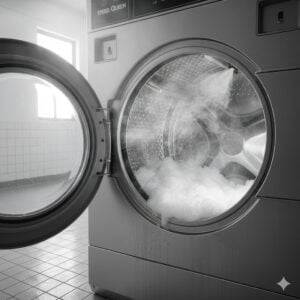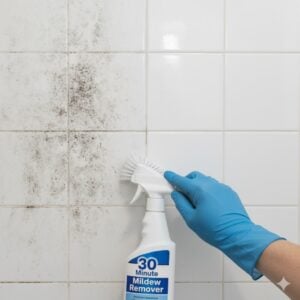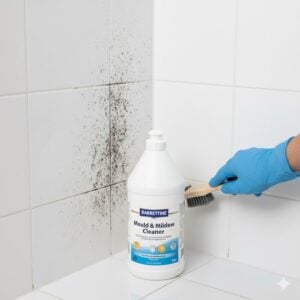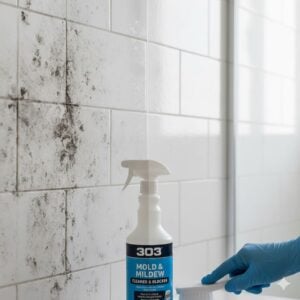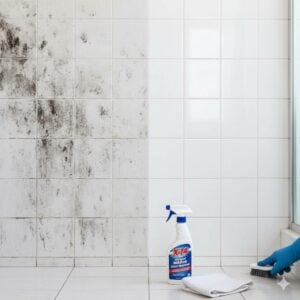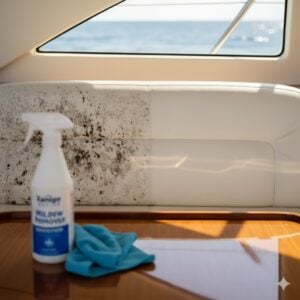You walk into your bedroom and glance up—there it is again. A dark patch on the ceiling. Maybe you’ve tried cleaning it off before. Maybe it smells musty. But if you’re in the UAE, especially in places like Dubai, Sharjah, or Abu Dhabi, chances are it’s not just dirt. It’s mold. And ceiling mold is more common than you think in this part of the world. But is it dangerous? How much does it cost to remove? And how can you stop it from coming back?
In this article, we will answer everything you need to know about mold on the ceiling—from causes and health risks to price breakdowns and long-term solutions. If you’re tired of seeing those black or green stains overhead and worried about your health or your property, this guide is for you.
Table of Contents
Toggle1. Is Mold on the Ceiling Common in the UAE?
Yes—mold on ceilings is a growing issue across many homes in the UAE. It’s not just something that happens in old or abandoned buildings. Even new apartments, villas, and commercial units can experience ceiling mold, especially during the hotter months.
The main reason? Our climate. The UAE is hot and humid outdoors, but most homes are cooled 24/7 with air conditioning. That constant temperature difference leads to condensation, especially on ceilings where cold air meets warmer areas. Bathrooms and kitchens are even more at risk due to steam and poor ventilation.
Other common causes include:
- Flat roofs that collect water during rare UAE rains
- Leaky AC ducts running across the ceiling space
- Poor ventilation in bathrooms or laundry rooms
- Hidden plumbing leaks behind ceiling panels
If left untreated, what starts as a small patch can grow quickly. Ceiling mold spreads because the spores travel in the air and find other damp spots to colonize. That’s why it’s important not to ignore even a tiny stain—especially if it keeps coming back.
2. Is Mold on the Ceiling Dangerous?
In short—yes, it can be. Ceiling mold doesn’t just look bad. It can release spores and toxins that float through the air, eventually entering your lungs. And since it’s literally hanging over your head, the exposure is constant, especially while sleeping or resting in the room.
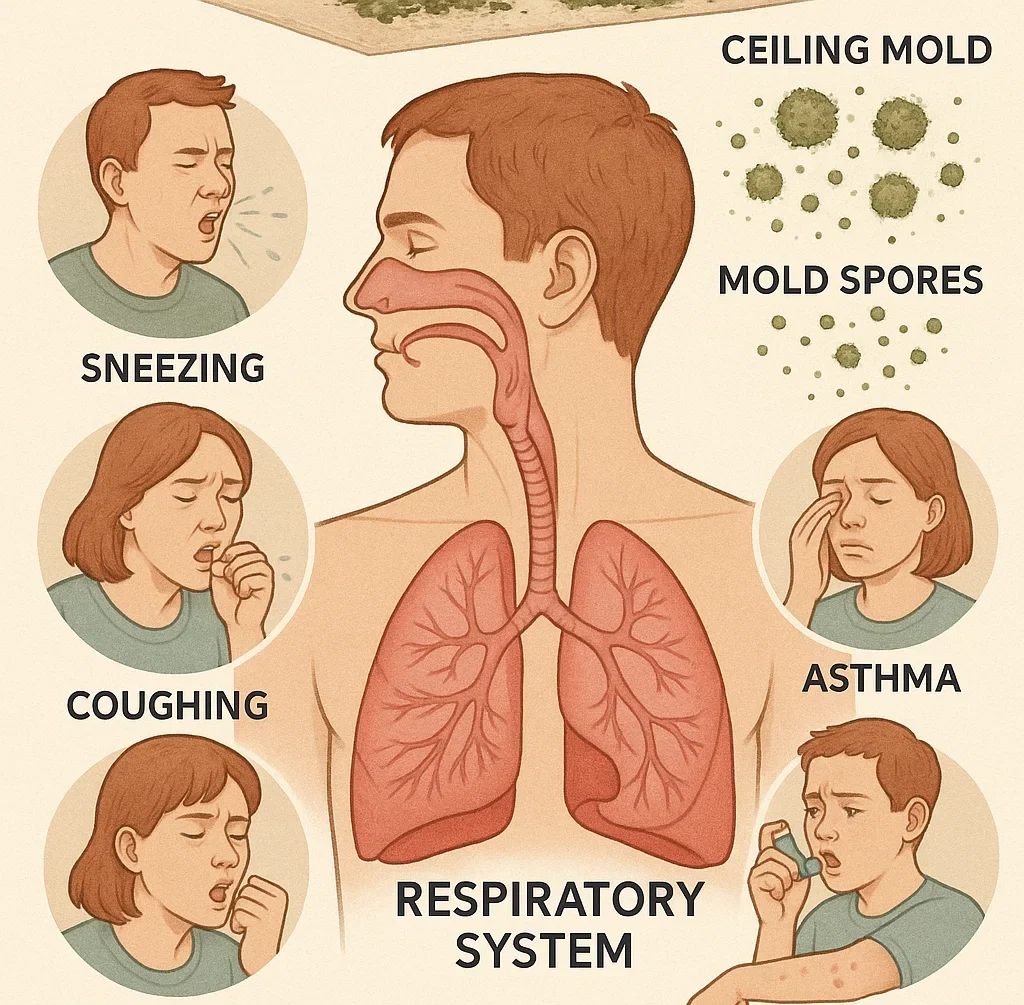
Some of the most common health risks linked to ceiling mold include:
- Frequent sneezing or coughing
- Worsening asthma or allergies
- Eye irritation and itchy skin
- Persistent headaches or fatigue
- Breathing issues, especially in children and the elderly
What makes it worse is that you might not even smell it at first. Mold can be “hidden” behind paint or growing on the ceiling’s inner layers, slowly releasing spores without a strong odor. Over time, this exposure can impact indoor air quality and affect your family’s health.
If you’ve noticed mold directly above your bed, in your baby’s room, or near your AC vents, it’s time to act fast. Ceiling mold is not something to take lightly—and cleaning it off with bleach isn’t enough. You need to stop it at the source.
3. How Much Does Mold Removal Cost in the UAE?
Wondering what it actually costs to remove mold on the ceiling in the UAE? You’re not alone. A lot of people avoid calling for help because they assume it’s expensive—but that’s not always true. The cost depends on several factors: how large the affected area is, what kind of surface it’s growing on, whether your AC is involved, and the level of damage.
Here’s a general breakdown of mold removal pricing in the UAE:
| Volume of work | (AED) per sq.m./running meter | (AED) per 10.76 sq.feet / 3.28 linear feet |
|---|---|---|
| Up to 1 sq.m. | 35 per 1 sq.m./running m. | 35 per 10.76 sq.feet or 3.28 linear feet |
| From 1 to 3 sq.m. | 30 per 1 sq.m./running m. | 30 per 10.76 sq.feet or 3.28 linear feet |
| From 3 to 7 sq.m. | 25 per 1 sq.m./running m. | 25 per 10.76 sq.feet or 3.28 linear feet |
| From 7 to 10 sq.m. | 20 per 1 sq.m./running m. | 20 per 10.76 sq.feet or 3.28 linear feet |
| More than 10 sq.m. | Free inspection | Free inspection |
These prices usually include inspection, cleaning, disinfection, and moisture source detection. But beware: some budget companies might only “clean” the visible mold without fixing the actual problem (like a leaky duct or roof). That’s just a temporary solution—and the mold will come back fast.
We at Bio-On offer free site inspections across the Emirates. Our goal is to help you find the source, remove the mold safely, and make sure it doesn’t return. If you want a clear, honest estimate, simply click the contact button on the right-middle of this post and we’ll get back to you quickly.
4. How to Fight Mold on Ceiling Effectively
Now let’s talk action. If you’ve got mold on the ceiling—or even suspect it—what can you do about it?
First, find the source. Mold needs moisture to survive, so check for leaks. It could be an AC duct dripping in the attic, water damage from a flat rooftop, or even steam from a poorly ventilated shower. Until you fix the moisture issue, mold will always come back.
Next, stop it from spreading. Avoid brushing or wiping dry mold, as this can release spores into the air. If you must do a temporary clean, use a spray solution of vinegar and water or hydrogen peroxide (not bleach, which can damage some ceiling materials and doesn’t kill mold roots). Wear a mask and gloves, and ventilate the area well.
For larger areas or recurring mold, professional help is the safest bet. Mold remediation involves more than just cleaning—our team uses HEPA air filtration, antimicrobial treatments, fogging machines, and moisture meters to make sure the mold is fully removed and your ceiling is safe again.
Trying to fight it yourself without proper tools can actually spread the spores to other parts of the home. If you’re unsure, it’s best to get a free consultation before it gets worse.
5. Preventing Ceiling Mold Before It Starts
The best way to deal with mold is to stop it before it appears. Once mold has taken hold, cleanup gets more expensive and risky—so prevention is key. Here are a few simple things you can do to keep your ceilings clean and mold-free in the UAE’s unique climate:
- Ventilate bathrooms and kitchens: Turn on exhaust fans during and after showers or cooking. If there’s no fan, crack open a window for 10–15 minutes.
- Dry damp areas quickly: If water spills or leaks on the ceiling (like from a rooftop AC), dry it within 24–48 hours to prevent mold growth.
- Use mold-resistant paint: Especially in moisture-prone areas like bathrooms, consider painting ceilings with anti-fungal coatings.
- Monitor humidity: Install a humidity sensor or use a portable dehumidifier in closed, humid rooms to keep moisture under control.
- Schedule inspections: If you’ve had mold before, make it a habit to check your ceilings and AC system every few months. Prevention costs far less than remediation.
Even simple daily habits—like running the fan an extra 10 minutes or wiping condensation off bathroom tiles—can make a big difference. Remember, mold doesn’t grow without moisture. If you keep your ceilings dry, you’ll keep them clean.
Conclusion
Mold on the ceiling may seem like a small issue at first, but in a place like the UAE, it can spread fast and pose real risks to your health and home. Whether it’s caused by poor ventilation, a leaky AC, or roof moisture, once mold sets in, it can be stubborn to remove.
We hope this guide gave you a clear understanding of what ceiling mold is, why it happens, how much it costs to fix, and what you can do to prevent it in the first place. If you’ve noticed stains, smells, or peeling paint on your ceiling—don’t wait until it gets worse. Simply click the contact button on the right-middle of this post and let our certified team take care of it quickly, safely, and discreetly.
Your home’s health starts from the top down. Let’s keep it clean together.








